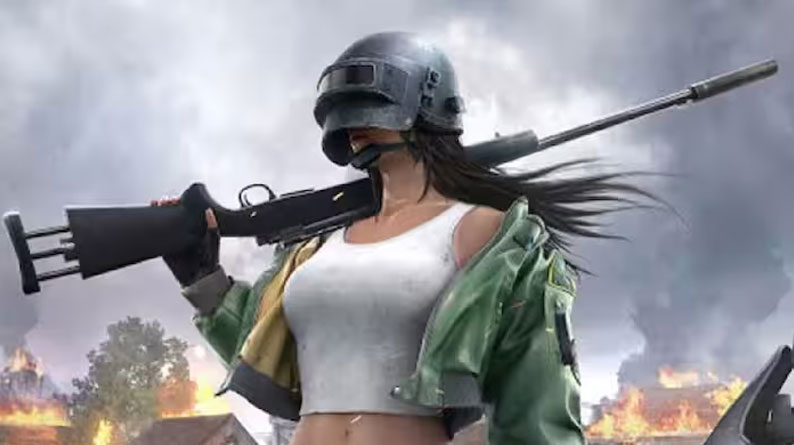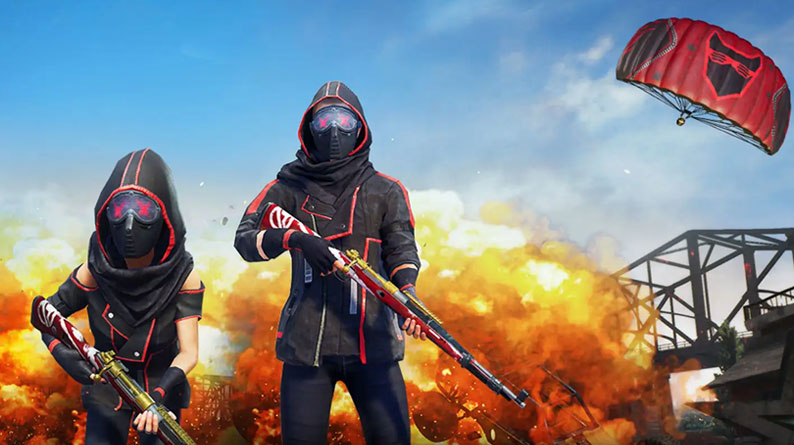When India banned PUBG in September 2020, it left a massive gap in the mobile gaming market. Millions of players were suddenly searching for the next big battle royale fix. But Krafton saw an enormous opportunity and returned the game with a twist. Following the local rules, they relaunched it as Battlegrounds Mobile India (BGMI). This comeback not only proved how popular battle royale games were but also sparked curiosity about how much did it cost to make PUBG, inspiring other developers and studios to create similar experiences.
There was a huge gap in the mobile gaming market after PUBG Mobile was banned. This increased the demand for games of a similar essence. Users began searching, increasing the number of downloads and daily active users for games like Battlelands Royale, Garena Free Fire, and Call of Duty Mobile. A shift began towards locally produced battle royale games, which signaled Indian game developers towards a vast opportunity to produce domestic alternatives.
However, witnessing India’s gigantic player base and revenue potential, Krafton played the trump card by officially announcing the game’s relaunch as Battlegrounds Mobile India (BGMI) on May 6, 2021. This strategic move allowed PUBG to re-enter the Indian market legally while also adhering to the government’s rule. Regardless of the ban and comeback tour, PUBG’s legacy remained rock solid, and its impact on the gaming industry continued to shape player preferences and industry trends. For developers looking to tap into this success, understanding how to make games like PUBG has become a key focus in the evolving gaming landscape.

Several factors played a role in making PUBG a global sensation:
Given PUBG’s massive success, many developers are curious about PUBG making cost, as creating a similar high-quality battle royale game requires significant investment in development, infrastructure, and marketing.
Determining the precise PUBG-making cost is challenging, as several factors influence development expenses, including development time, technology, and team expertise. However, the table below provides an estimated breakdown of the costs involved in creating a game like PUBG.
| Game Type | Estimated Cost | Details |
| Basic Battle Royale Game | $15,000 – $100,000 | Includes basic features with limited graphics and multiplayer functions. |
| Mid-Range Development | $100,000 – $150,000 | Higher quality graphics, advanced multiplayer, and better optimization. |
| AAA-Level PUBG-like Game | $1 million – $3 million+ | High-end graphics, servers, marketing, and cross-platform functionality. |
| PUBG Mobile (Indian Market) | $20,000 – $25,000 | Cost-effective development in India, optimized for mobile. |
PUBG’s making cost likely exceeded these estimates due to its extensive feature set, global reach, and continuous updates.
Developing a mobile game like PlayerUnknown’s Battlegrounds (PUBG) is a complicated and resource-intensive process requiring major financial investment, a professional development team, and rigorous preparation. The entire PUBG game making cost can vary significantly based on several factors, such as the game’s scope, required quality, and the location of the production team. Below is a comprehensive overview of the potential expenses involved in developing a game like PUBG.

Considering the factors above, the PUBG game making cost can range from $10 million to $50 million. This estimate depends on the project’s scale, desired quality, and additional features required for a high-quality battle royale experience.
Juego Studios develops immersive, high-quality battle royale games with cutting-edge technologies. Our skilled developers, designers, and artists create interesting, graphically attractive, and technically robust games based on your specifications. Whether you’re searching for a mobile battle royale game or a cross-platform shooter, our comprehensive game development services include idea design, 3D asset creation, multiplayer server integration, and real-time updates.
If you’re wondering how much it cost to make PUBG or looking to develop a similar game, our team can guide you through the process. Let us work together to create the next huge battle royale game—contact us today to get started!
The popularity of PUBG paved the way for battle royale games to dominate the gaming industry, and its ban in India created a great opportunity for new gamers. However, producing a game of this magnitude requires substantial expenditure in technology, production, marketing, and ongoing support. With the PUBG game budget ranging from $10 million to $50 million, a skilled development team is vital to the project’s success.
If you’re thinking of making a game like PUBG, collaborating with an experienced game production team like Juego Studios can help you fulfill your vision.
The precise PUBG development cost is difficult to determine due to various factors.
Basic Battle Royale Game
Mid-Range Battle Royale Game
AAA-Level Battle Royale Game (Similar to PUBG)
One major challenge was ensuring smooth multiplayer performance for up to 100 players per match. The team had to optimize Unreal Engine 4, manage server stability, and refine mechanics like the shrinking play zone. Balancing weapons, loot distribution, and movement also required extensive testing.
Post-launch, PUBG faced issues like cheaters, performance bugs, and regional adaptations. The “Fix PUBG” campaign in 2018 aimed to address these concerns. In China, blood effects were removed to comply with regulations, leading to a localized version called Game for Peace. Managing PUBG’s explosive growth and global appeal required continuous updates and improvements.
PUBG’s development cost was significantly lower than major AAA games. Estimates suggest it cost tens of millions—far less than Grand Theft Auto V ($265M) or Call of Duty: Modern Warfare ($250M). Greene’s prior experience and Unreal Engine 4’s efficiency helped reduce costs.
PUBG Mobile required even less investment due to its streamlined four-month development cycle and Tencent’s mobile expertise. However, ongoing expenses, including servers, anti-cheat measures, and esports support, added significantly over time. Despite its modest budget, PUBG’s innovative gameplay led to massive success, with PUBG Mobile alone generating over $9 billion in revenue.
The 2020 ban on PUBG Mobile in India significantly impacted revenue, as India was one of its largest markets with over 50 million active users. While the game had already generated billions globally, analysts noted a decline in revenue from in-app purchases and ad monetization in India. However, strong performance in markets like the U.S., China, and Southeast Asia helped PUBG maintain its global earnings.
Tencent also expanded its esports ecosystem and localized the game for other regions to offset losses from the Indian market.
PUBG returned to India as Battlegrounds Mobile India (BGMI) in 2021, published by Krafton instead of Tencent to comply with Indian regulations. Krafton implemented stricter data privacy policies and tailored the game with localized content and age restrictions to address concerns about addiction. Additionally, the company invested in India’s gaming ecosystem by hosting esports tournaments and hiring local talent. This strategic approach helped BGMI reclaim a significant portion of PUBG’s former player base while adhering to government guidelines.